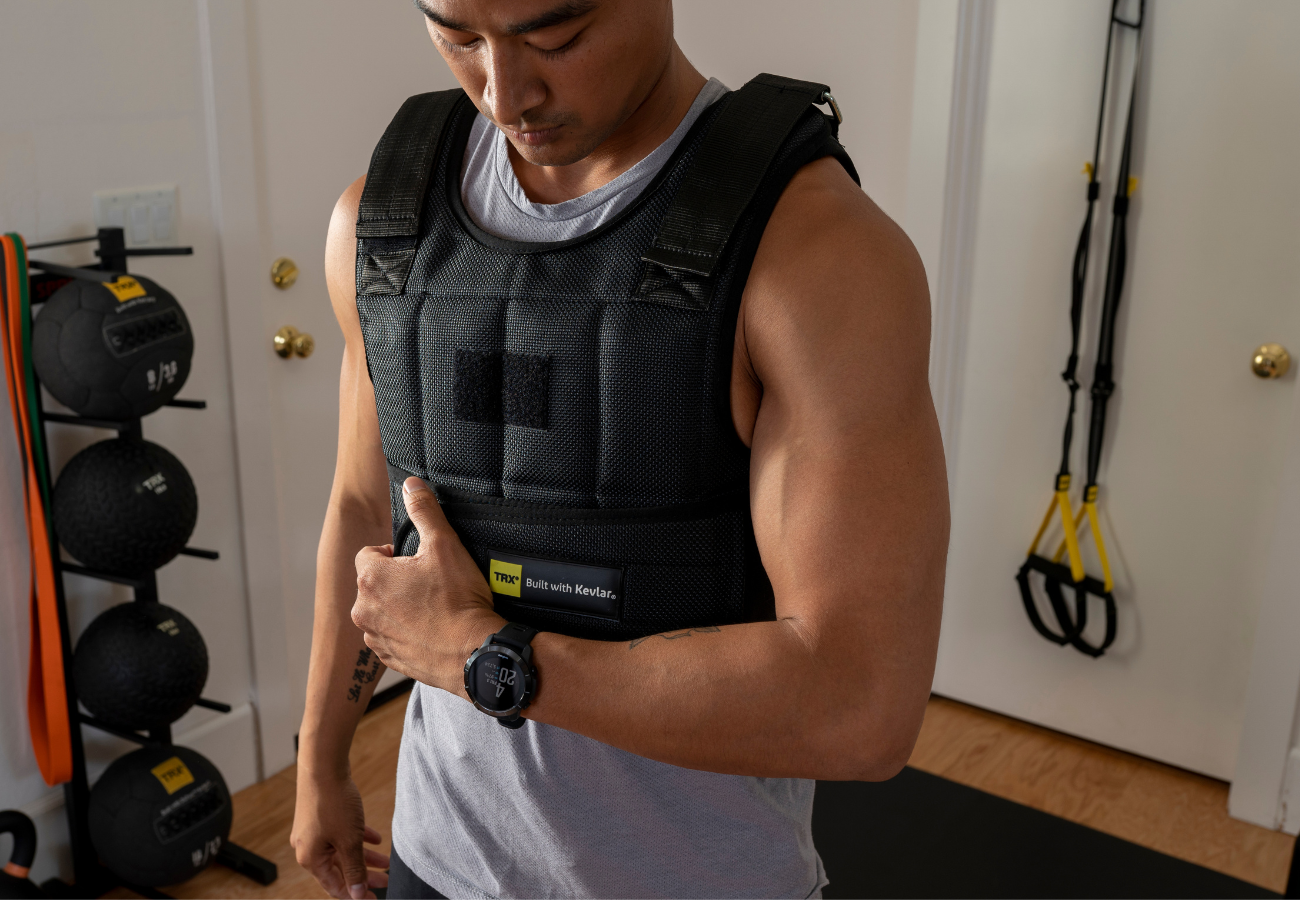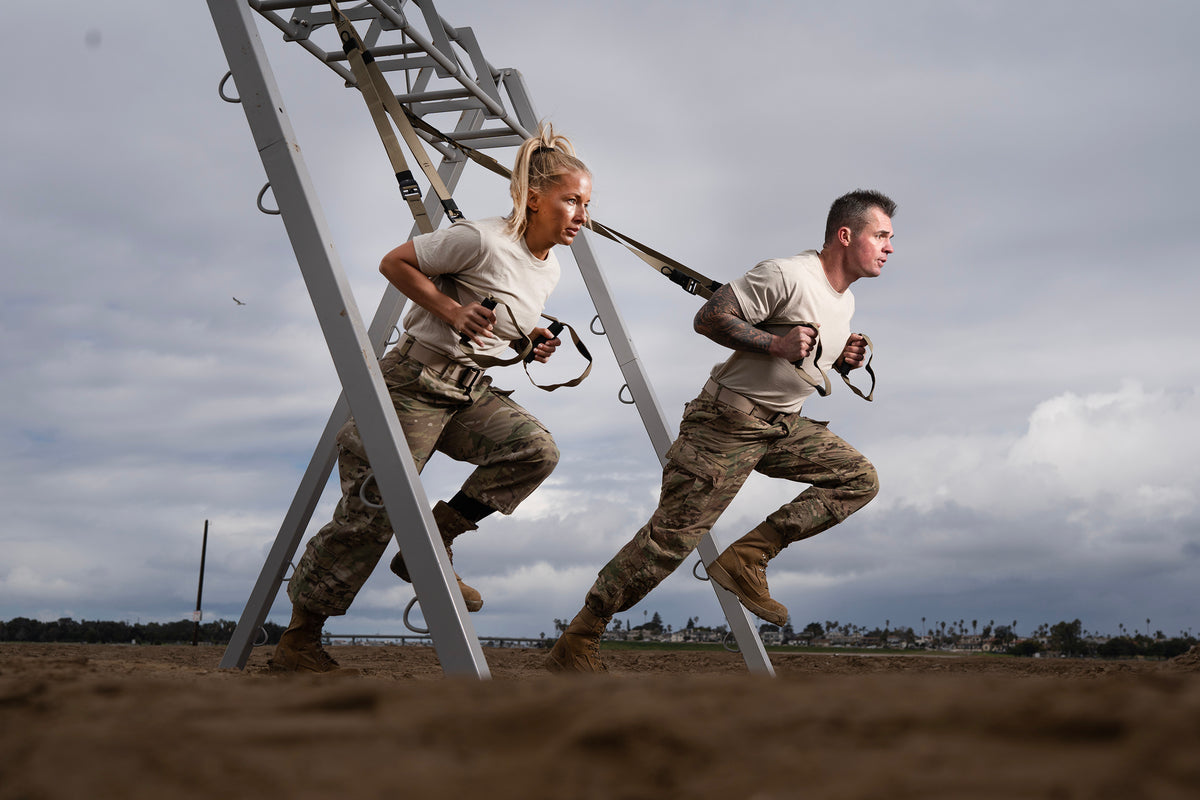Weighted vests offer more than just a passing fitness trend—they are a highly effective tool for enhancing workout results in various unexpected ways. Whether you are a competitive athlete or casual fitness goer, integrating a weighted vest into your workouts can provide substantial benefits.
Wearing a weighted vest can significantly improve your results from CrossFit and functional training to general fitness. Below, we will explore the eight key advantages of using this versatile piece of equipment during your workouts.
TAKE OUR TRAINING QUIZ
1. Enhanced Strength
One of the primary advantages of wearing a weight vest is the significant boost in strength it provides. By introducing additional resistance to your movements, every exercise becomes more challenging. This increased load forces your muscles to work harder, leading to greater strength gains over time. Essentially, it transforms every workout into a more demanding session, even during simple activities like walking or performing bodyweight exercises.
2. Strengthens Core
A robust core is crucial for virtually all physical activities, from everyday tasks to advanced athletic maneuvers. Wearing a weighted vest continuously engages your core muscles as they work to stabilize your body against the extra weight. Over time, this consistent engagement results in a stronger, more defined core, which enhances overall fitness and improves posture.
3. Promotes Bone Health
Maintaining bone density is vital, particularly as we age. Weighted vests are effective in promoting bone health by causing your bones to work harder to support the additional weight. This added stress can contribute to improved bone density and reduce the risk of osteoporosis and other bone-related conditions. In essence, it provides a workout for your bones, complementing the benefits you gain for your muscles.
4. Improved Equilibrium
Balance and stability are essential for both everyday activities and athletic performance. A weighted vest enhances your equilibrium by requiring your body to maintain balance under uneven and shifting loads. This improvement in balance during workouts can translate to better stability in daily life, thereby reducing the risk of falls and injuries.
5. Prevents Boredom
Repetitive workout routines can become monotonous. Introducing a weighted vest can inject a new level of challenge and variety into your exercises. Whether you are doing pushups, lunges, or running, the additional weight adds difficulty and makes familiar exercises feel new and engaging. This simple addition can help alleviate boredom and keep your workouts fresh and exciting.
6. Ideal for CrossFit
CrossFit's high-intensity and varied workouts are well-suited to the inclusion of a weighted vest. Whether participating in WODs (Workouts of the Day), AMRAPs (As Many Reps As Possible), or endurance exercises, a weighted vest can elevate your performance. It increases the intensity of your training, helping you build strength, endurance, and power more effectively. It is also a key component of the Murph Challenge, an intense CrossFit workout involving running, pull-ups, push-ups, squats, and additional running.
7. Efficient Use of Time
For those with limited time, a weighted vest can enhance the efficiency of your workouts. By intensifying your exercises, you can achieve more significant results in shorter sessions. This makes it an excellent option for busy individuals who want to maximize their fitness outcomes without extending their workout duration.
8. Enhanced Cardiovascular Function
Cardiovascular health benefits significantly from the use of a weighted vest. The added resistance compels your cardiovascular system to work harder, which can improve heart and lung capacity over time. Whether engaging in walking, jogging, or high-intensity interval training (HIIT), a weighted vest can enhance cardiovascular fitness and overall heart and lung function.
What to Consider When Wearing Weighted Vests
While the advantages of incorporating a weighted vest into your fitness routine are numerous and well-documented, it is essential to carefully consider several important factors to ensure both safe and effective use. Proper attention to these considerations can help you maximize the benefits of the weighted vest while minimizing potential risks and ensuring that your workouts are as productive as possible. By taking these factors into account, you can tailor the use of the vest to suit your specific needs and fitness goals, ultimately enhancing your overall exercise experience.
Breathability
Weighted vests can become quite warm, especially during intense workouts. It is crucial to select a vest made from breathable materials that allow for adequate air circulation. This helps maintain comfort by preventing overheating and ensures that you stay cool throughout your exercise session.
Weight Source
The type of weight used in a vest can vary, with options including sandbags or metal plates. The choice of weight source can affect how the vest distributes weight and how it feels during use. Opt for a vest with a weight source that aligns with your personal preferences and the demands of your workout routine.
Safety
Safety is paramount when using a weighted vest. Begin with a lighter weight to allow your body to adjust, gradually increasing the load as your strength and endurance develop. Ensure that the vest fits securely to prevent any shifting that could lead to injury. Always listen to your body and avoid excessive strain, particularly when first incorporating the vest into your routine.
Use
Understanding the appropriate use of a weighted vest is essential. While it is beneficial for many exercises, it may not be suitable for all activities. Incorporate the vest into bodyweight exercises, walking, or running, but exercise caution with high-impact or complex movements where the added weight might strain your joints.
Comfort
A well-designed weighted vest should offer comfort during use. Look for a vest with adjustable straps to achieve a secure and customized fit. Additionally, consider the material to avoid irritation. A comfortable vest encourages regular use, which maximizes the benefits of incorporating it into your fitness routine.
Body Movements
The added weight from the vest can affect your range of motion. Ensure that the vest does not restrict your movements or alter your form during exercises. Maintaining proper form is crucial to prevent injury and to effectively reap the benefits of your workouts.
Style
While functionality is the primary concern, the style of the vest may also be important to you. Choose a design that you find appealing and motivating. Whether you prefer a sleek, low-profile vest or one with additional features, selecting a style that you feel confident wearing can enhance your overall workout experience.
Try These Weighted Vest Exercises
If you’re ready to experience the benefits of a weighted vest, here are some exercises to get you started.
Weighted Vest Power Walking
Weighted Vest Power Walking is brisk walking with added weight from a vest, increasing resistance and intensity. This challenges your cardiovascular system and muscles more than regular walking, targeting the legs and core. It boosts strength, endurance, and cardiovascular fitness.
Here’s how to do a Weighted Vest Power Walking:
- Put on a weighted vest, adjusting the straps for a snug fit.
- Start with a 5-minute warm-up of light walking or dynamic stretches.
- Begin walking briskly, maintaining a pace that elevates your heart rate.
- Keep your core engaged and use a natural arm swing.
- Maintain an upright posture with shoulders back and head up.
- Adjust the speed and weight as needed to stay challenged but not overexerted.
- Finish with a 5-minute cool-down of slower walking and gentle stretching.
Lunges
Lunges effectively target the legs and glutes. By incorporating a weighted vest, you increase the intensity of this exercise, which adds resistance and accelerates the development of lower body strength.
Here’s how to do a Lunges with a Weighted Vest:
- Securely wear the weighted vest, ensuring it fits snugly but comfortably.
- Begin by standing with your feet hip-width apart and engage your core.
- Take a controlled step forward with one foot, keeping your torso upright.
- Bend both knees to lower your body. The front thigh should be parallel to the ground, and the back knee should hover just above the floor. Ensure your front knee is directly over your ankle.
- Press through your front heel to return to the starting position, bringing your rear foot back beside your front foot.
- Repeat the movement with the other leg.
- Continue alternating legs for the desired number of repetitions or duration.
- Finish with some light stretching to relax your muscles.
Squats
Squats are a fundamental exercise in many workout routines. Using a weighted vest elevates the challenge, leading to enhanced muscle growth and increased calorie burn. The added weight intensifies the exercise, helping to achieve greater results.
Here’s how to do a Squats with a Weighted Vest:
- Put on the weighted vest, ensuring it fits securely and comfortably.
- Position your feet shoulder-width apart with your toes slightly pointed out. Engage your core and keep your chest up.
- Push your hips back and bend your knees, lowering your body as if you are sitting into a chair.
- Continue lowering until your thighs are at least parallel to the ground or as low as your flexibility allows. Keep your knees aligned with your toes.
- Hold the squat position briefly, ensuring your weight is distributed evenly through your heels and midfoot.
- Press through your heels and straighten your legs to return to the starting position.
- Perform the desired number of repetitions, maintaining good form throughout.
- After finishing, stretch your legs and hips to aid in recovery.
Rows
Rows with a suspension trainer involve leaning back while holding the handles and pulling your chest towards them by bending your elbows. This exercise targets the back, biceps, and core, engaging the rhomboids, and biceps, while also requiring core stability for proper alignment.
Here’s how to do a Rows with a Suspension Trainer:
- Adjust the straps to a mid-length for the exercise.
- Stand facing the suspension trainer and grasp the handles with your palms facing each other.
- Walk your feet forward and lean back, keeping your body in a straight line from head to heels. Extend your arms fully and keep your core engaged.
- Bend your elbows and pull your chest towards the handles, squeezing your shoulder blades together at the top.
- Slowly extend your arms to lower your body back to the starting position, maintaining control and keeping your body straight.
- Perform the desired number of repetitions, ensuring smooth and controlled movements throughout.
Push-ups
Push-ups with a suspension trainer involve performing a push-up while your hands are placed on the trainer’s handles. This variation increases the challenge by adding instability, which engages the chest, shoulders, triceps, and core more intensely. The instability of the handles forces your muscles to work harder to stabilize your body throughout the movement, enhancing overall strength and stability.
Here’s how to do a Push-ups with a Suspension Trainer:
- Set the suspension trainer straps to a shorter length, so the handles are just off the ground.
- Put your hands in the handles of the suspension trainer, ensuring they are securely positioned.
- Walk your feet back to form a plank position with your body in a straight line from head to heels. Keep your core engaged.
- Bend your elbows to lower your chest towards the ground, maintaining a straight body line. Your elbows should be at about a 45-degree angle from your torso.
- Press through your hands to extend your elbows and lift your body back to the starting position.
- Perform the desired number of repetitions, focusing on maintaining control and stability throughout the movement.
Try a Weighted Vest Today!
If you are aiming to elevate your workouts, incorporating a weighted vest could be a game-changer. Offering a range of benefits—from enhanced strength and core stability to improved cardiovascular health and increased bone density—this straightforward piece of equipment can significantly impact your fitness regimen. Begin with a lighter weight, select a vest that suits your needs, and prepare to experience notable improvements in your overall performance and results.



